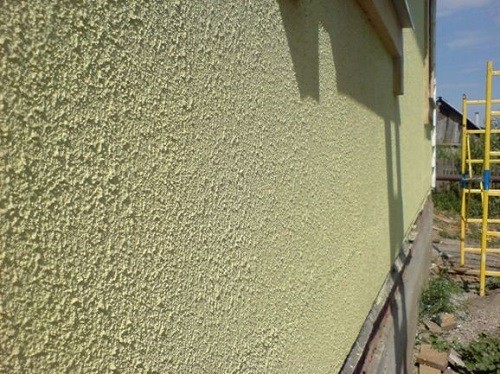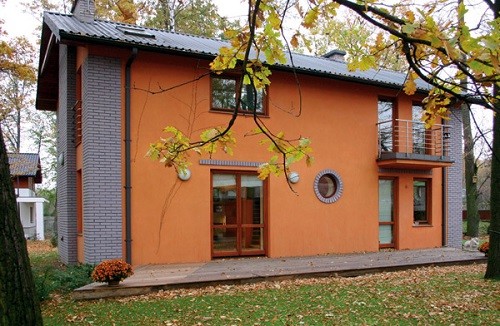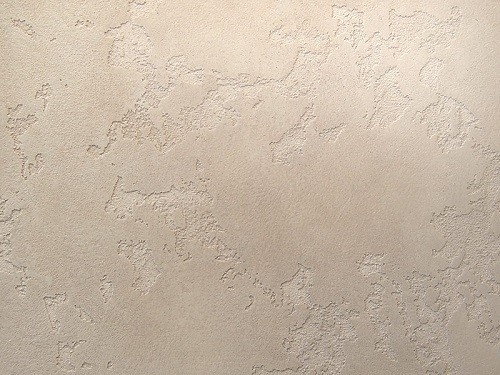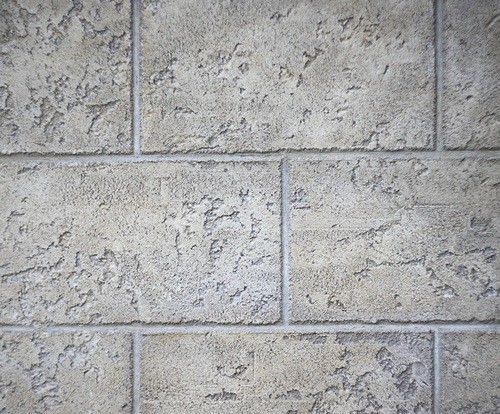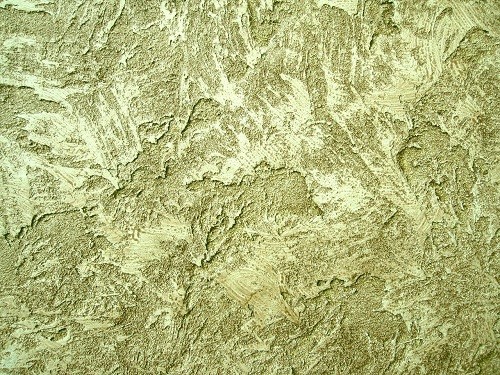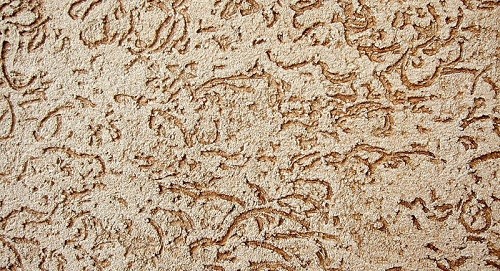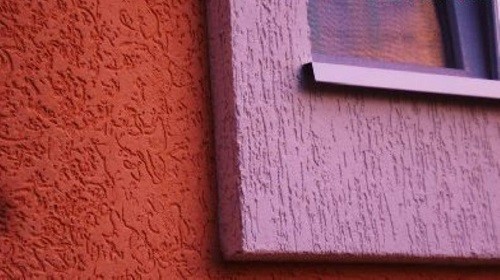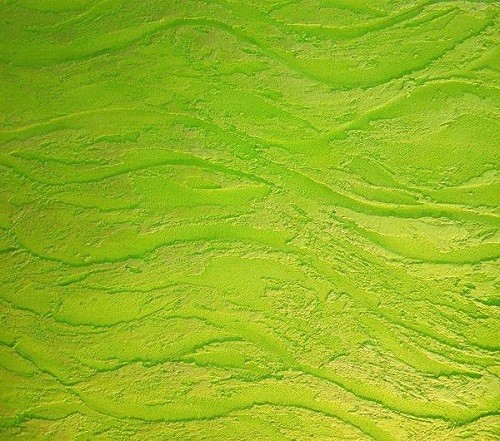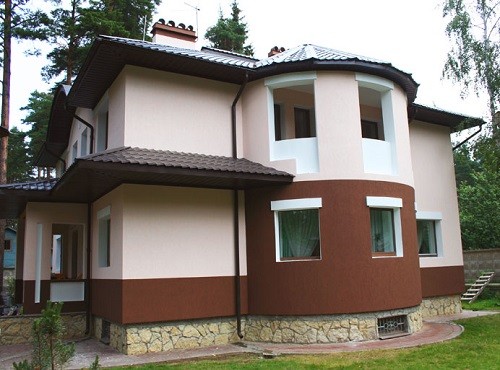
Decorative facade plaster: Features of choice Building materials
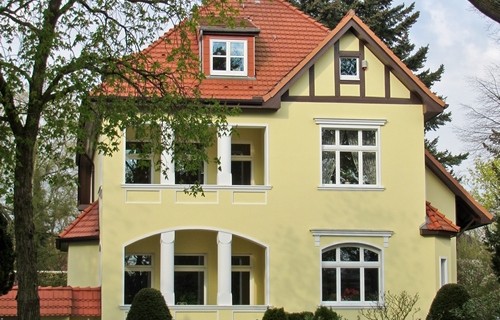
Plastering is one of the oldest methods of exterior decoration of buildings, and if used for that use clay, but now in the construction market, you can find a lot of interesting options. The decoration of the facade - the final phase of construction, which will depend on the appearance of the building. And in order to "cover" the house looked neat and respectable, it is necessary to choose a decorative facade plaster.
Content
Types of stucco facade
facade finishing quality to determine not only the consistency of the owner, but also its design preferences, attitude to life and even character. If the house is somehow smeared with paint, it is unlikely that the owner is different thrift and taste. Another thing - a beautiful building with a neat clean and smooth facade.
Contents facade on your taste and budget today is not difficult. There are lots of choices: siding, ekobond, marble slabs, etc. However, the most popular and original way to finish a facade plaster.
There are several types of plaster for outdoor work, depending on the material from which it is produced and the structure given by when applied to the wall. Let us consider in more detail each of them.
acrylic plaster
The basis of this type of plaster is the aqueous acrylic solution to which the material is obliged to its operational characteristics. Such plaster is very elastic and practically does not miss moisture. The only drawback is its neutral electrostaticity. In other words, it greatly attracts dust particles and dirt, so it has to be often soaked.
Acrylic plaster is sold usually in the ready-made form, which greatly facilitates work with it, however, the difficulties and specificity of application on the wall are still present. One of these nuances is the coating speed - if you treat only the prests, and then take a break, then the junction zone with the second half will be very noticeable even after drying. Therefore, when working with acrylic plaster, it is necessary to quickly cover a separate plane of the house from the wall to the wall.
Advantages of acrylic plaster:
- high elasticity (does not create cracks during drying, it is well tolerating the shrinkage of the facade);
- beautiful adhesion to any surfaces;
- suitable for coating OSB-stoves (seams pre-pour the sealant, primed the surface and install the reinforcing grid);
- a sufficiently thin coating layer.
Mineral Plaster
Plaster, based on the cement mixture. Due to the composition is characterized by high strength at a small layer. Comes in dry bags (it is necessary to breed with water). Mineral facade plaster opposes the formation of mold, fungi and dampness.
The main disadvantage of this species in a limited color scheme, but also this problem is solved quite simply. It is enough to purchase white mineral plaster and paint its silicate paint of the desired shade.
Advantages of cement facade plaster:
- deep penetration of the solution in the thickness of the wall (additional strengthening of the surface);
- low vapor permeability;
- low cost;
- easy to use.
Silicone plaster
One of the most expensive types of facade plaster. It is explained by the fact that a variety of minor stone fillers are added to the silicone basis. Thus, the composition of quartz sand creates a natural stone effect.
The advantages of silicone plaster:
- high elasticity (can bend and stretched);
- plastic than acrylic (cracks are not formed even with a strong shrinkage of a wooden house);
- you can compose in any color;
- the frozen surface is capable of self-cleaning (the rain is easily flushes dust and dirt particles);
- does not attract dust in contrast to acrylic compositions;
- is moisture (additional waterproofing wall);
- despite the absolute hydrophobicity, leaving a vapor-permeable wall.
silicate plaster
If we compare the composition of this type of plaster could be attributed to the mineral, if not the fact that the connecting element is a no cement, and water glass. This explains the high vapor permeability of the coating and low elasticity, which makes it possible to apply the plaster on the walls even of porous concrete.
Silicate plaster on the basis of potassium silicate glass is treated with the old ceiling or mineral bases. It is perfect for warming of houses mineral wool or polystyrene foam plates.
When the plaster is applied on the facade, it reacts with the wall material. As a result, the latter becomes much stronger and at the same time elastic. It is for this reason that silicate plasters are widely used to eliminate small cracks.
Advantages silicate plasters:
- elasticity;
- high vapor permeability;
- is resistant to the formation of mold and mildew;
- is not susceptible to moisture;
- fireproof;
- easy to use.
There are several types of silicate plaster, depending on the structure given by: bark and lamb.
structural plaster
Another criterion is separation decorative plasters their structure. Professionals designate them depending on the type of textured pattern, but the result also depends on the application method and composition of the tools used in the process.
Plaster "bark"
One of the most original and popular types of textured plaster for interior and exterior use. The name of the structure derives from the effect produced - if the walls oozing bark beetles, having done there florid passages. The mixture contains stone fractions of different size and shape, which when applied to form various irregularities.
Facade plaster "bark" creates a feeling of comfort and relaxation, so if you want to create a harmonious and peaceful image of the house, it is recommended to stop the choice on this option. Depending on the size of solids in the composition will be different "moves" on the surface. The plaster can be found commercially with grains of 0.1 mm to 3.5 mm. The most popular are the formulations with a diameter of 2 mm crumbs.
Dignity "bark" of plaster:
- High resistance to adverse weather conditions. Plaster is capable of withstanding the harsh winter temperatures below -50C and heat to + 55C.
- The color does not fade in the sun.
- A resistant to long-term exposure to moisture (even after a weekly rain, the surface will not spill).
- Effectively hides irregularities and surface defects.
- Resistant to mechanical damage.
- Durable - keeps the initial appearance up to 6-7 years.
- If desired, the plaster can be repainted with water-free or acrylic facade paint.
- It is very easy to care for the plaster - you can wipe with a cloth, wash out the hose and even vacuuming.
Fucker "Shuba"
A fine-grained composition designed for decorative finishing of buildings inside and outside. The greatest popularity of "fur coat" acquired during the Soviet Union. It was then that she received its name - a cement-sand mixture with large stone fractions created a characteristic pattern on the surface.
The pattern may vary depending on the brand of cement used and particulate size. Over time, the technology of manufacturing plaster has become much easier, and the materials used have changed. As a result, the mixture became easier, stronger and more durable.
Characteristics of the structural plaster "fur coat":
- environmentally friendly material;
- does not have a strong smell;
- diluted with water;
- high water repellent properties;
- you can wash;
- easily smeared on the surface;
- resistant to the effects of chemicals in the air;
- resistant to mechanical impacts;
- increases the strength of the wall;
- convenient in modeling;
- durable;
- continuing alkalis resistant.
Plaster "lames"
Textured facade plaster with the cute name of "lamb" when applied to the wall forms a relief surface resembling a fleece. To create a dense and durable coating, it is enough to apply a layer with a thickness of only 2-4 mm. The disadvantage of plaster is that after drying, it needs to be treated with a facade red on an acrylic or silicate basis.
Characteristics of embossed stucco "Barakhek":
- increases the strength of the wall;
- resistant to mechanical impacts;
- effectively hides small cracks and chips on the facade;
- does not fade in the sun;
- atmospheric resistant;
- high vapor permeability;
- hydrophobicity;
- environmental safety for health and nature;
- has a soft smell;
- easily applied and smeared over the surface;
- acid and alkalisply;
- quick rates of drying.
Plastering paint.
A separate variety of decorative plasters, a distinctive feature of which is not a composition or texture, but color characteristics.
Plastering paint has the following distinctive features:
- it is present in the composition lime, sand, volcanic dust and a polymeric binder;
- is a material that combines paint and plaster functions;
- very economical in use;
- has increased elasticity;
- it does not allow forging fungus and mold;
- it has good adhesion to any surfaces;
- resistant to temperature drops, it is well tolerating harsh Russian winter;
- vapor permeable;
- does not require preliminary preparation of the surface of the walls (primer, alignment);
- well hides defects;
- can be applied to the moisture surface;
- a wide color palette (since the coloring pigment is made in a dry mass until water diluted, it does not need to be painted separately);
- easy to repair (you should only paint a breakage fragment);
- easy to apply (even newcomer will cope with work).
Manufacturers of plaster
We are getting closer to the question of which facade plaster to buy, but before you give practical advice, we recommend considering the most popular domestic and foreign manufacturers.
The products of the following manufacturers are most in demand in the Russian market:
- Bolls is a Russian firm founded in the late 90s. It offers a wide selection of finishing materials at an affordable price.
- Kaparol is a German brand with an excellent reputation and experience with more than 100 years. It offers very high-quality products, however, the price of the outer facade plaster of this manufacturer can shock the economical owners.

- Volma - brand known since 1949. Products produces Volgograd Gypsum Plant, but the choice is small - only 2 options for cement-sand mixtures.
- Atlas is a Polish manufacturer, famous for good construction products and is very popular in the Russian market. The main advantage is moderate prices, even in domestic standards.
- Baumit is a manufacturer with a 20-year experience, which for a relatively short time from the Little Austrian Plant grew up into an international concern, which has offices in 30 countries around the world.
- Ceresit is perhaps the most popular products whose price fully corresponds to quality. Inexpensive cost and always a good result make facade plasters cerepes the most sought after in the domestic market.

- Itorems - the domestic producer, which appeared in the market in 2005 and immediately conquered the location of consumers. Quality products at reasonable prices. One of the most remarkable brands in the domestic Russian market.
- Wetonite is the brand of the French Giant Saint-Goben company, which is working for the benefit of the construction industry for more than 350 years. Real Mastodont Industry with Impeccable Reputation, Qualitative Products and Relevant prices.
- Experiencers - a Russian firm, which began its activities immediately after the collapse of the Union in 1992. It is distinguished by modest prices and quite decent quality of products. All offered plaster mixes meet the quality of Russian GOST.
- Knauf is a firm known to the world with high-quality construction materials and acceptable prices. It has in the range any products and offers its innovative solutions.
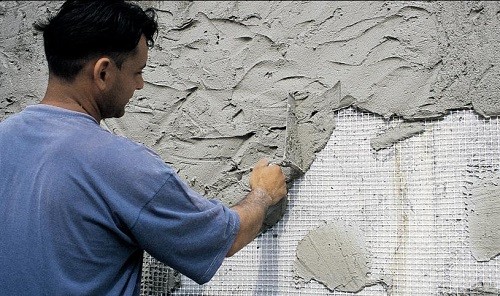
How to choose plaster
Choose the plaster should be given, considering many factors: the desired result, climatic conditions, financial capabilities, deadlines, etc. Only considering and processing each of them, one can be sure that the covering of the facade will not fall off after the first rain or will not be unworn from the affectionate May sun.
Silicate and silicone compounds are suitable for homes located near the tanned motorways, plants or in adverse climatic conditions. These same plaster can be used to restore old structures. They have high vapor permeability, which is very by the way, because after applying plastering from the walls there may be moisture. For the northern regions and conditions with sharp drops of temperatures, silicone compositions are also recommended.
If the house is located in a temperate climatic zone and does not have special requirements for the design of walls, the rational all will apply cement or acrylic plaster. To determine the choice, you should consider the main selection indicators. Most immediately focuses on the cost, but this factor in no case should be decisive.
What should be paid attention to before buying facade plaster:
- Transportation - If you buy mineral plaster, during delivery paper bags with a mixture can break. Acrylic compositions occupy more space, but they are supplied in reliable plastic buckets.
- Storage - it is logical that the right to start plastering does not work, because usually all materials are purchased in advance. Therefore, you should be warned beforehand about the preparation space with comfortable conditions for storage of plaster. These may be large plastic containers that protect the composition from moisture or cold. Check out the shelf life of the selected type of plaster. For example, cement-lime mixture is stored only 6 months.
- Preparation - despite the presence of the instructions for the preparation of dry plaster mixtures, pull it is not so simple. Get a mixing apparatus (mixer building, a concrete mixer) and the measured capacitance to exactly comply proportions. Also keep in mind that plant compounds have in large containers or in part (depending on the size of the facade). Prepare in advance all the necessary capacity.
- Grain size - if you want to use the structural plaster with fine grains, choose acrylic compositions. Cement plasters are not a priori from the fine fraction and are designed to create a rough surface.
- Mixture flow - flow plaster structure depends on the gauge of solid particles. Dry mineral mix rate of about 3.8 kg per cubic meter, while only 1 kg of acrylic plaster cover the same area.
- Time - you always want to do away with the repair as soon as possible, especially if you are already on the "finish line." If you want to quickly mark the end of construction, forget the cement compositions. Mineral plaster will dry for a month, after which they will have to cover the paint. To shorten the finishing time, you can use quick, but expensive silicone plaster, which dries just 10-14 days. Acrylic compositions and dry at all this week, and can be tinted on the following day after application.
- Color palette - if you want to create an original colored facades, have to shell out plastering paint. Mineral plasters are inexpensive, but offer a choice of only a limited number of pastel colors.
- Surface preparation - different types of plasters have their own requirements to the surface on which they will be applied. To keep a long cement plaster and efficiently, you need to properly align and primed the walls. In this regard, the acrylic mixture is much more convenient, since absolutely "undemanding" surface quality.
Of all the above, it can be concluded that an acrylic plaster is an optimal option for the Russian consumer, since it can be applied in various climatic conditions and on all sorts of surfaces. It is supplied already in the finished form, and the finishing technology of the facade is very simple, so even an inexperienced worker will cope with it.




